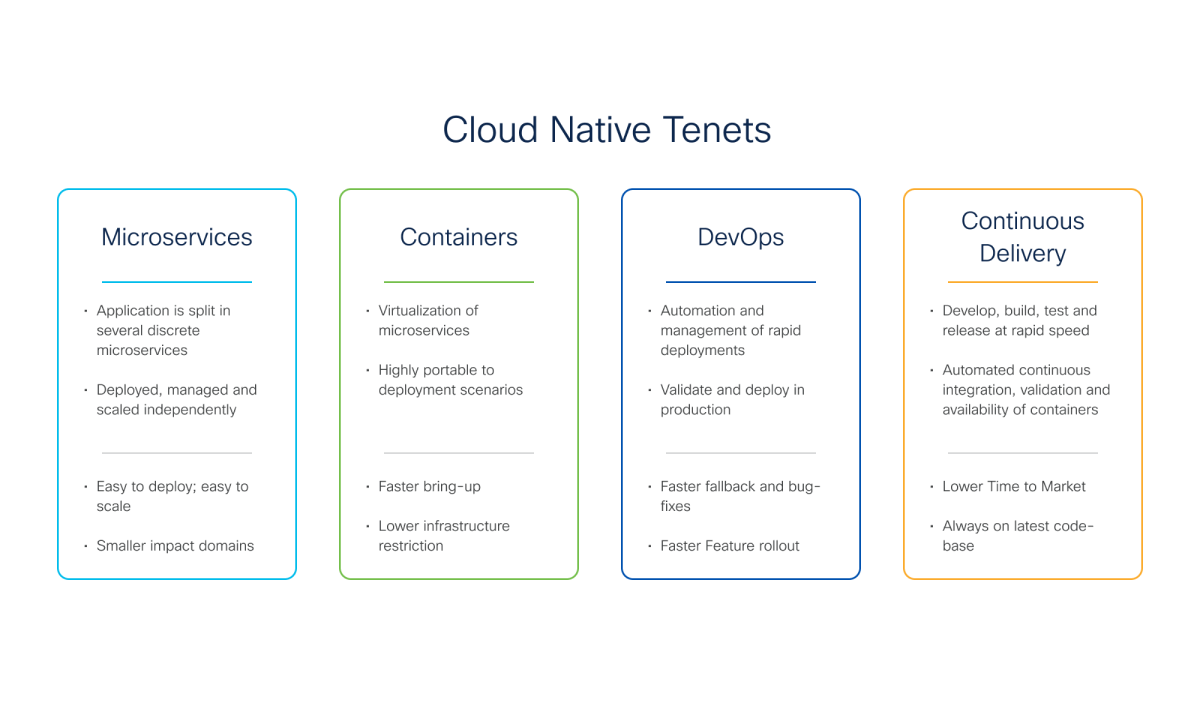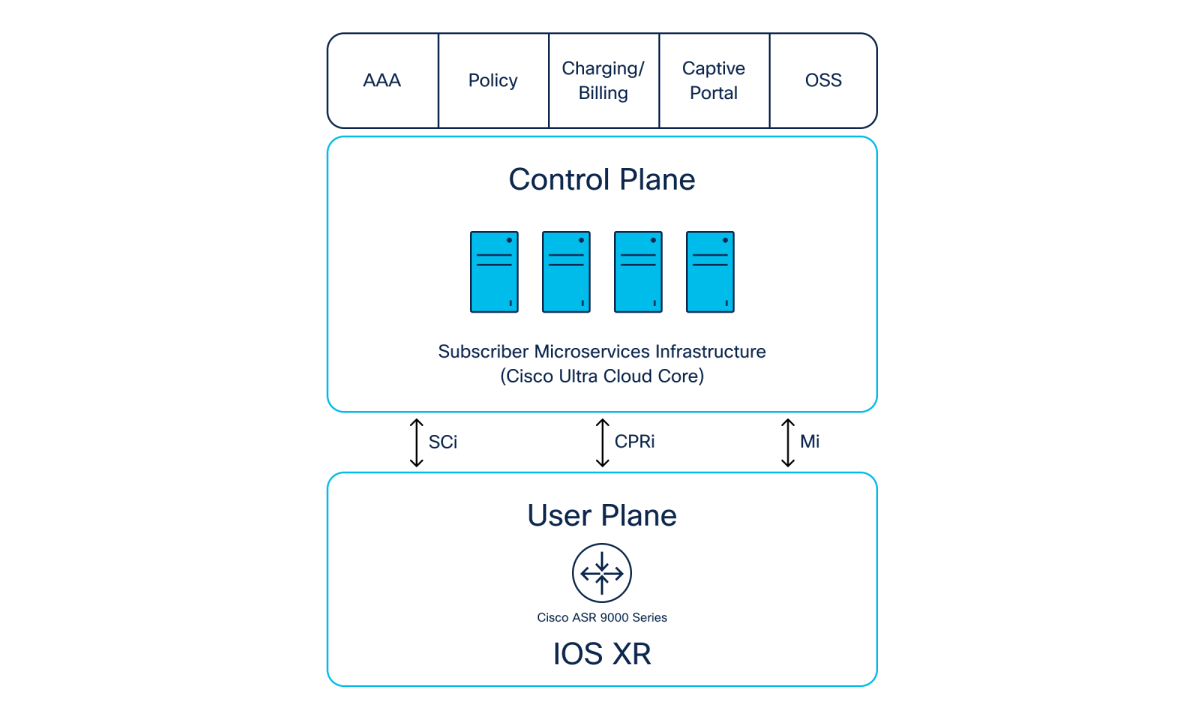This is Part III of a three-blog series on solutions to overcome challenges associated with bridging the digital divide.
In part I of this series, we discussed traditional broadband network architectures and their limitations. In part II, we discussed details on the evolution of broadband networks, using a distributed architecture with a centralized control plane, designed to address the challenges associated with traditional broadband networks. In this final blog, we will focus on the Cisco solution with Subscriber Edge.
Cisco Subscriber Edge solution
The Control and User Plane Separation Broadband Network Gateway (CUPS BNG) solution from Cisco terminates residential broadband subscribers, is aligned with TR-459, and called Cisco Subscriber Edge or cloud-native BNG (cnBNG), because cloud-native technology is used to host control plane functions.
Given the critical need for resiliency in the control plane, which is tasked with terminating millions of subscriber sessions over hundreds of distributed user planes, Cisco’s subscriber edge control plane has been developed as a cloud-native application from the ground up using Go programming language to ensure superior reliability.
As part of the evolution to cloud-native network functions, the Cisco Subscriber Edge control plane architecture is decomposed into multiple microservices and deployed as containers that can be independently scaled, upgraded, and deployed according to requirements (see Figure 1 on cloud-native tenets used for the control plane architecture).

The decomposition of control functions into multiple independent stateless microservices allows better resiliency. It also enables hitless upgrade of the control plane, independent patching of problem or failed containers, and limited rollout of features or software changes with no widespread functional impact. These microservices are deployed using the same infrastructure as Ultra 5G Packet Core, which hosts the 5G Packet Core Functions as containers, and can be easily extended to run on third-party container-as-a-service (CaaS) platforms.
Cisco Subscriber Edge architecture
Cisco Subscriber Edge architecture (see Figure 2) is aligned with Broadband Forum TR-459 . In this architecture, the control plane is cloud-native with choices of hardware and software user planes based on the IOS XR network operating system (NOS).

The Cisco Subscriber Edge architecture provides numerous technical advantages and benefits, positioning CSPs to effectively broaden their networks in alignment with the changing demands of the market. These advantages are distinctive to the Cisco architecture and complement the benefits already inherent in the CUPS framework. The additional benefits include:
- Operational ease: Cisco’s control plane architecture includes an Ops Center function, which makes BNG operations more user-friendly for BNG network engineers and reducing the need to manage Kubernetes directly. For added efficiency, Cisco Crosswork Network Automation offers automation for deployment, lifecycle management, and service orchestration, while also maintaining service assurance.
- Industry-leading scale: At the heart of Cisco Subscriber Edge is a cloud-native control plane, designed for massive industry-leading scale, supporting a network of one million sessions with hundreds of user planes. Expanding capacity is simplified by adding extra computing resources or new nodes, ensuring a smooth scale-up process that keeps existing subscriber sessions online without any impact.
- Resiliency: Cisco’s architecture uses a layered approach for resilience that ensures the control plane is protected from server to data center failures in a cloud-native environment. The user plane protection is ensured by subscriber redundancy group (SRG) feature support, which mitigates risks from link and platform failures to entire site outages.
- Simplified BNG Monitoring: With Cisco Subscriber Edge, the task of monitoring BNG key performance indicators (KPIs) is simplified through an included Grafana Dashboard, doing away with complex monitoring setups and extra licensing costs. This intuitive dashboard showcases an extensive selection of metrics that operation teams can customize, simplifying the monitoring experience significantly. Moreover, Cisco Subscriber Edge ensures smooth integration with third-party dashboards, through telemetry and bulk statistics.
- Easier integration: Cisco Subscriber Edge architecture is aligned to TR-459 standard, which utilizes the CUPS model to reduce OSS/BSS touchpoints with the control plane, thereby facilitating smoother integration. Built on a foundation of cloud-native technology and a microservices framework, the control plane ensures rapid deployment of new features, streamlining the integration process for enhanced efficiency.
Bridge to universal broadband
The Cisco Subscriber Edge solution, aligned to Broadband Forum TR-459 standard, marks a significant advancement in broadband network gateway technology. With the cloud-native control plane, CSPs can efficiently manage the demands of millions of subscriber sessions across a vast array of distributed user planes deployed at different layers in the network.
The Cisco solution can help CSPs adapt to evolving broadband and traffic requirements, expand their networks effectively, and leverage unique solution advantages which complement benefits inherent in the CUPS framework.
For BNG engineers, the Cisco architecture simplifies operations and increases efficiency through the Ops Center function and Cisco Crosswork automation capabilities.
Network operators can benefit from a fortified solution using a layered architecture that protects both the control plane and user plane from various malfunctions and outages, including site failures and data center outages. Other operational benefits include easier integration with standards-based alignment, and simplified monitoring of key BNG performance indicators using the embedded Grafana dashboard for a customizable and comprehensive view of performance metrics without extra costs.
Cisco’s commitment to innovation and the cloud-native approach empowers network operators to build a brighter future for broadband networks. Reducing costs, simplifying networks, and enabling high-quality services can help make the internet more affordable and ubiquitous with better end-user experiences for all.
Reimagine your broadband network gateway architecture with
Cloud Native Broadband Network Gateway
Resources
- Cisco CUPS BNG Solution Overview
- Broadband Forum TR-459 Issue 2: Multi-Service Disaggregated BNG with CUPS. Reference Architecture, Deployment Models, interface, and Protocol Specifications
- Broadband Forum MD-459.4
- Blog – Part 1 in the series: Bridging the Digital Divide with Subscriber Edge
- Blog – Part 2 in the series: Re-architecting Broadband Networks
